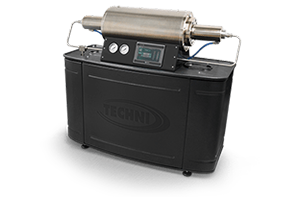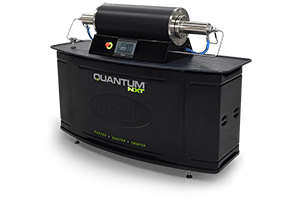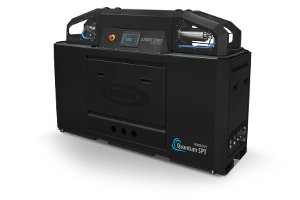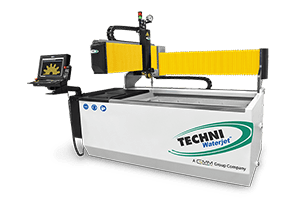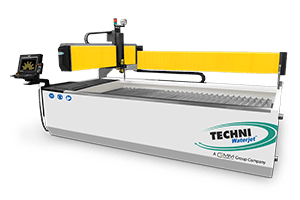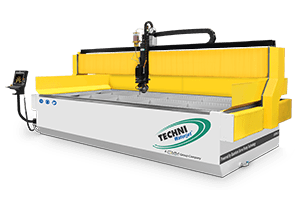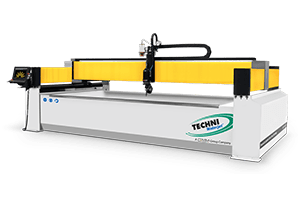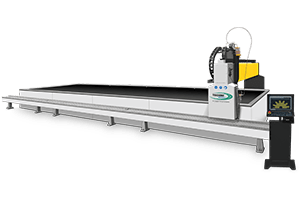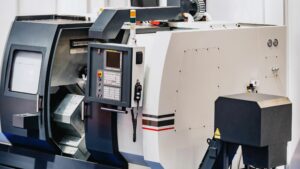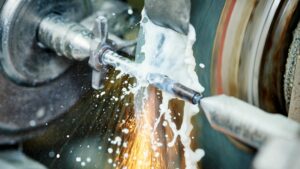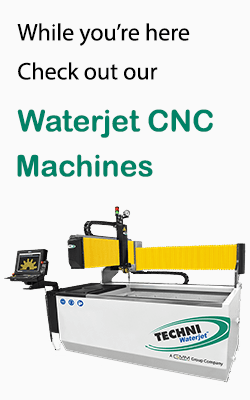Multi-axis CNC machines are the manufacturing standard for most major manufacturers. Understanding ‘what is multiaxis machining?’ opens a new world of possibilities for your manufacturing or fabrication facility.
Multi-axis machining can significantly increase production numbers and the production quality of any manufacturing setup. In addition, this machining process can create parts that you cannot manufacture with conventional technology.
This article will have an in-depth discussion on multi-axis machining, its working process, various types, advantages, limitations, and a lot of other information.
What is Multi-axis Machining?
Multi-axis machining is the machining process where the machine tool can move in four or more directions. Each direction is referred to as the degree of freedom. Multi-axis CNC machining can involve different numbers of axes, such as 4, 5, 6, 8, 10, and 12.
However, the complexity of the machine increases significantly as the number of axes increases. An important thing to note is that 3-axis CNC machining is not a part of the multi-axis machining process. This is because the cutting tools move only in X, Y, and Z axes in 3-axis machining.
Modern multi-axis machining mnachines are controlled by Computer Numerical Control (CNC). CNC technology can automate the movement of the cutting tool and other machine parts. CNC control works on software programs created for the particular part beforehand.
Who Invented Multi-axis Machining?
Richard Kegg invented the foundation of multi-axis CNC machining in 1952. Multi-axis machining was also practiced before that time. However, early multi-axis machining did not involve CNC technology. Machining was done with the movement of CAM plates manually.
Manual multi-axis machining was inconsistent and slower. Additionally, there was the added factor of human error. The application of CNC technology to the process has completely changed how it works.
How Multi-axis Machining Works?
Multi-axis machining is a step-by-step process. The particular working can vary based on the type of multi-axis CNC machine used. However, certain steps are common to all multi-axis machines. These steps are:
1. Designing the Part
Firstly, it is important to create the graphical design of the part. The various dimensions and features of the part are mentioned in this design.
2. Creating CAD Model
A CAD model of the part is created on Computer Aided Design software. The CAD model contains all the details of the part in digital graphic format.
3. Converting CAD to CAM
The CAD model is converted to the Computer Aided Manufacturing (CAM) format. This is because CNC machines recognize CAM language. This step is done in CAM software.
4. Machine Setup
The operator does the machine setup. This includes loading the part, transferring CAM software to the machine, and selecting various required settings.
5. Executing the Program
Once setup is complete, the operator executes the program. The machine starts working on the part.
6. Finalizing
The operator checks the part to see if any reiteration is required. If everything is fine, the operator unloads the part from the machine.
How does multi-axis machining differ from traditional machining methods?
Multi-axis machining differs from conventional machining in the cutting tool movement. Multi-axis machining center can move the cutting tool in four or more directions. However, a conventional machining center can only cut tool movement in three directions at most.
What are the Main Components of a Multi-axis CNC Machine?
The main parts of a multi-axis CNC machine are:
- Machine Frame: The machine frame holds the entire machine together. It provides rigidity and support to the various parts of the machine.
- Machine Control Unit (MCU): MCU is the brain of the CNC machine. It reads the programming commands and translates them for the various parts of the machine.
- Input: Input devices provide a way for the operator to interact with the machine. It may consist of a keyboard for entering data into the machine.
- Spindle: The spindle is the part that holds the cutting tool. Movement of the cutting tool is attributed to the moving spindle.
- Display: CNC machines have a display where you can view the machine settings and any error message codes.
- Machine Tools: Every CNC machine uses a dedicated cutting tool for machining the part.
- Driving System: Driving system is a set of motors that creates movement in the multi-axis CNC machine. The movement of cutting tool, spindle speed, work table rotation, and any other type of motion is carried by the driving system.
- Feedback System: The feedback system is essential for the minute movement of the machine. The feedback system verifies the machine’s movement and sends a signal back to the machine controller to make adjustments.
- Bed: The bed is the area where the operator mounts the workpiece material. The bed has various fixtures to secure the workpiece in place tightly. Bed in multi-axis machining are capable of rotation or horizontal movement. However, the bed is stationary in a traditional machining center.
- Chuck: Chuck is a type of clamp that holds the workpiece tightly during machining. It is generally used in lathe multi-axis machining operations.
- Headstock: Headstock contains the bearing, main drive, and the gears required for rotating the chuck. The headstock is closed and can be removed only by trained professionals during inspection, maintenance, and repair.
- Tailstock: Tailstock is generally used when support is needed for long cylindrical workpieces. Without a tailstock, the workpiece can move away with the impact of the cutting tool.
- Footswitch: Footswitch is a pedal that can perform auxiliary functions on the CNC machine. A footswitch’s general function is the tailstock’s activation and deactivation.
- Coolant Systems: Multi-axis machines are heavy equipment that can get very hot during operation. Therefore, a coolant system is present on CNC machines to ensure the temperature remains within safe limits for the machinery.
Different Configurations in Multi-axis CNC Machining
There are many different configurations of a multi-axis machining center. These machines mainly differ in the number of axes and how they work together. Axis refers to the direction in which a cutting tool can move. There are two types of axis in CNC machining:
- Linear Axes: Linear axes are the three axes that work in a straight line. These are the X-axis, Y-axis, and the Z-axis. X, Y, are the two horizontal directions parallel to the machine bed. The Z-axis is the vertical direction perpendicular to the bed. The linear axes are present in all multi-axis CNC machines.
- Rotary Axes: Rotary axes are the three rotational directions around the linear axes. These are termed the A-axis, B-axis, and C-axis. A-axis is rotary around the X-axis, B-axis around the Y-axis, and C-axis around the Z-axis. Besides the A-axis, B-axis, and C-axis, the presence of the E-axis sometimes exists. E-axis is the rotary axis for twisting of the arm.
Now let us go through the many different types of multi-axis machining and how they utilize the axes mentioned above:
3+2 Axis Machining
3+2 axis machining is also known as positional 5 axis machining. It is very different from generic 5-axis machining. The machine can undergo three linear axes motion like any other CNC machine. Additionally, it can move the workpiece in two rotary axes and lock it in place. After that, conventional 3-axis machining can execute on the workpiece.
The main advantage of 3+2 axis machining is that it increases the workable faces of the workpiece. This comes at a comparable cost of a 3-axis CNC machine, making the process cost-effective. However, it misses out on the real-time performance of a 5-axis machining center.
4+1 Axis Machining
4+1 axis CNC machines can move simultaneously in four directions. 3 are the linear axes X, Y, and Z, and the fourth is any one of the rotary axes. The fifth direction is positional. This means that the workpiece can move in the fifth axis, lock position, and then 4-axis machining can carry out on the workpiece.
5 Axis Machining
5-axis machining is also known as simultaneous 5-axis machining to separate it from 3+2 and 4+1 machining. The machine tool is capable of motion in 5 different axes simultaneously. Three of these are the linear axes- X-axis, Y-axis, and Z-axis. Other two are the rotary axes: A-axis and B-axis. Simultaneous movement of the cutting tool in five axes provides higher machining speed than 3+2 and 4+1 configurations.
6 Axis Machining
6-axis machining combines all three linear axes and all three rotary axes. There is movement in the three axes: X-axis, Y-axis, and Z-axis. The cutting tool can also move in the A, B, and C axes. Including all six axes provides high transition speed for the machining operation. 6-axis machining is commonly used in the automobile industry.
7 Axis Machining
7-axis CNC machines have three linear axes (X, Y, and Z), three rotary axes (A, B, and C), and a seventh E-axis. The E-axis is the rotary axis in the direction of twisting of the arm holding the cutting tool. There are generally two spindles present in a 7-axis CNC machine.
9 Axis Machining
A 9-axis CNC machine combines the operations of a 4-axis machine and a 5-axis machine. Common example of 9-axis machines are hybrid mills used for surface machining of the part. The 4-axis machine is usually a lathe for internal milling. This enables internal and external machining of the parts in a single setup.
12 Axis Machining
12-axis machining configuration typically comes with two 6-axis cutting tools. Each cutting tool is capable of independent movement. The purpose of 12 axis machining center is to increase the productivity and cutting speed of the machine. The 12-axis machine also has unparalleled accuracy.
Rotary Table Machining
The rotary table is a common feature found in multi-axis CNC machining. It allows the work table to rotate around a central axis. The rotation of workpiece provides the operation of a higher axis machine on a lower axis equipment. This increases the machine capabilities while reducing costs.
Tilting Rotary Table Machining
Tilting rotary table machining configuration allows the rotation of the work table in the horizontal plane. In addition, the work table can also tilt up to a certain axis. This allows for very complex machining operations in a lower axis CNC machine.
Multi-angle Heads
Multi-angle heads are attachments used in multi-axis machining. The cutting head has the capability of tilting at multiple angles. This allows for complex surface finish and contouring operations in multiaxis machining.
Hexapod Machines
Hexapod machines are a variation of multiaxis machines. It contains six actuators in a hexagon shape. The actuators are capable of simultaneously working on the workpiece. The scale of the hexapod machines can be toned down to the required size. This is why hexapod multiaxis machines are commonly used in micromachining and optical manufacturing applications.
What are the Advantages of Multiaxis Machines?
There are many advantages of using multiaxis machines. These are:
- Fewer Setups: Multiaxis machines have more machinable surfaces in a single setup. Therefore, fewer setups are required to machine the workpiece completely.
- High Precision: Higher accuracy is a major reason people prefer multiaxis machining. Accumulated error is highly reduced due to fewer setups. This leads to high precision in the workpiece.
- Efficiency: Fewer setups and more machinable surfaces lead to faster operation. This increases the overall efficiency in the case of multiaxis machining.
- High Complexity: Multiaxis machining can create parts of higher complexity. These complex parts are usually difficult or impossible to make with a 3-axis CNC machining option.
- Features: It is possible to add many design features with multiaxis machines. These features can be for aesthetics or for practical uses.
- Cost: Fewer setups mean lesser requirement of loading and unloading the part. This reduces the labor costs of the whole operation.
- Tool Life: Multiaxis CNC machines can use a shorter cutting tool. This reduces the tool vibration and prolonged the life of the tooling.
What are the Limitations of Multiaxis Machining?
In most cases, multiaxis machines are a better option than any other alternative. However, there can be some limitations to the process. These are:
- Machine Cost: Cost is the primary factor that dissuades most manufacturers from getting multiaxis machines. Multiaxis machines are very expensive equipment.
- Programming: The programming for multiaxis machining is highly complex. It requires a skilled programmer, which adds the expense of the whole operation.
- Maintenance: Multiaxis machining is very complex. The equipment requires frequent maintenance. In case of faults, repairs are not that easy.
- Operator Skill: Besides programmers, operators also require a high skill level. They need to be familiar with the capabilities of multiaxis machines and how to make the most of it.
What are Common Multiaxis Machining Operations?
There are many different types of multiaxis machining operations commonly used in the manufacturing sector. Some of these operations are:
- Milling: CNC mills are one of the most common multi-axis machines. Multiaxis milling machines are used for making complex contours, surface features, internal geometry, and more.
- Lathes: CNC lathes are also called multiaxis turning centers or turn-mill centers. These lathes are capable of rotating the workpiece as well as the tool.
- Swiss-type Lathes: Swiss lathes differ from conventional lathes due to a moving headstock configuration. Swiss-type lathes can operate in 5-axis or more.
- Electrical Discharge Machining (EDM): EDM is a machining method used for cutting metal. It works by using high frequency alternating current for melting the material at the required area. It can only work for conductive materials.
- Waterjet Cutting: Waterjet cutting uses the force of high-pressure water to remove material from the workpiece. Multi-axis waterjet cutters can shape the external surface and create internal geometry for the part.
- Grinding Machines: Multi-axis grinding can work simultaneously on multiple faces of the workpiece. It is used for improving the surface finish of the material. It can also improve workpiece precision.
- Robotic Systems: Robotic system machining is usually done with hexapod systems. The machine tool is mounted on a robot which has 6 degrees of freedom. This method is useful for micro-machining centers.
What are the Applications of Multi-axis Machines in Different Industries?
Multi-axis CNC machining finds usage in a lot of different industries. Some of these industries are:
Aerospace and Aviation Industry
Aerospace industry requires parts with ultra-high precision. Therefore, multi-axis CNC machining is the preferred manufacturing method for this sector.
Automotive Industry
The automotive industry requires high production numbers and precision. Multiaxis machining meets the challenges of this industry quite well even on complex engine parts. Additionally, it can work on the high-hardness metals and alloys used in this industry.
Jewelry Making
Jewelry making requires complex machining centers that can work on a minute level. Modified multiaxis machining and hexapod machining centers are used for this purpose.
Furniture Industry
Furniture industry heavily relies on multi-axis lathes and swiss type lathes for making furniture. Parts such as table legs, wooden carvings, and glass and marble tops are made using multi-axis machining methods.
Medical Industry
Medical industry creates implants and devices that are crucial for life sustaining functions. Therefore, it requires ultra high precision and elimination of any possible defects. Multi-axis CNC machining is the preferred way to manufacture parts for this industry.
Defense Industry
Defense industry requires parts with high complexity made out of the toughest materials. The production is in low numbers but the customization is usually of a high degree. Therefore, multi-axis CNC machining is applied for making these parts.
Marine Industry
The marine industry uses large-scale construction of parts for boats, ships, yachts, and other sea transportation. Multi-axis machining creates these parts which are then assembled together at a later stage.
Safety Considerations for Multi-axis Machining
Multi-axis CNC machining uses cutting tools that can easily pierce through metal and alloys. Therefore, there are many safety considerations to ensure no harm takes place to the workforce or the workplace.
- Guards: Most multi-axis CNC machining come with guards that prevent human parts from going under the cutting tool during machine operation. Ensure that the guards are enabled when using multi axis machining.
- Laser Curtains: Modern Computer Numerical Control machines come with laser curtains that stop the machine if the sensor detects a safety hazard.
- Operator Training: Ensure that the operator is trained in the safety measures required to operate multiaxis CNC machines.
- Machine Usage: Use the multiaxis machine with the appropriate tooling and setup suggested by the machine manufacturer.
- Programming Simulation Software: Use simulation software to run mockups of the program. This ensures that there is no collision during program execution.
How to Choose a Multiaxis Machine?
Choosing a multiaxis machine can be a tough choice between various manufacturers. Here are some of the factors you can consider when making such a choice:
- Number of Axes: Higher axes machines have better capabilities and precision. However, the difference in cost is substantial. Choose a meeting point of cost vs. capabilities.
- Simultaneous vs. Positional: Choose whether you want a simultaneous multi-axis CNC or a positional one. If you require high production numbers or extreme precision, simultaneous multiaxis CNC machines will be more apt. Otherwise, positional multiaxis CNC machines can save you some money.
- Value for Money: It is better to consider the value for money of these machines instead of their cost. Machines that come a bit cheaper can break down more often. The dowtimes caused can lead to significant losses for your business.
- Warranty: The warranty provided with the machine can demonstrate the manufacturer’s faith in its equipment. Therefore, check the machine’s warranty before buying it.
- After-Sales Support: After-sales support of multiaxis machines is very crucial. The manufacturer should provide maintenance and support whenever required. Additionally, there should be availability of spare parts too.
Future Trends in Multi-axis Machining
Multi-axis machining is moving towards micromachining to assist in semiconductor-based manufacturing. Parts in the electronics and IT industry are shrinking down to the lowest possible sizes. Multi-axis machining is being used in fabrication lines for smartphones and computer chips. PCBs for other electronics are also manufactured with such micromachining technology.
Robotics and automation are also crucial parameters for future growth of multiaxis machining. More and more manufacturers are automating the entire assembly line for faster and more consistent product. Therefore, multiaxis machining options like the hexapod manufacturing process are developing rapidly.
Endnotes
Multiaxis machining is becoming the preferred manufacturing process for most medium to large scale industries. With a marginally higher investment than three axis machine parts, multiaxis machines come with a lot of benefits. Additionally, the ability to machine complex shapes is second to none. If your industry requires consistency, high production speed, precision, or complex parts, multi-axis machining can be a great fit for you.
